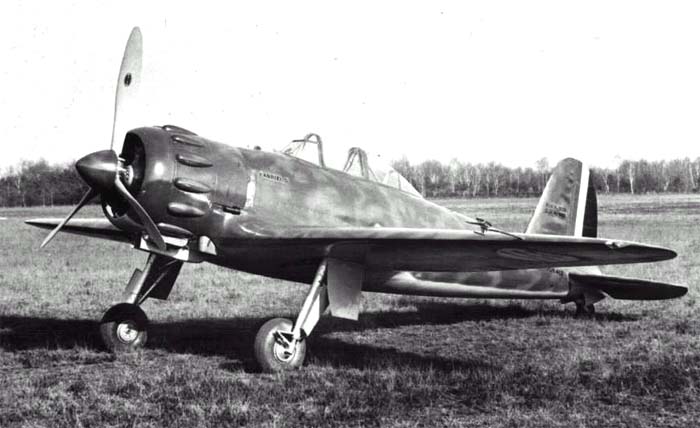Caproni Vizzola F.5
The F.5 was developed in parallel with the Caproni Vizzola F.4, with which it shared a common airframe. Design began in late 1937 by a team led by F. Fabrizi. The aircraft had a welded steel-tube fuselage and wooden wings; the fuselage was covered with flush-riveted duralumin, while the wing had a stressed plywood skin. The F.5 (standing for Fabrizi 5) had a two-row 14-cylinder Fiat A.74 R.C. 38 radial engine, unlike its cousin the F.4, which Fabrizi and his design team intended to be powered by a water-cooled engine. The F.4 project was not pursued immediately because the Italian Air Ministry held its proposed engine in disfavor, but development of the F.5 continued.
The F.5 prototype first flew on 19 February 1939. The aircraft displayed very high maneuverability during official testing, prompting an order for both a second prototype and 12 preproduction models. The last of the preproduction aircraft was selected for use as a prototype in a renewed F.4 program, but the rest of the F.5 order was delivered to the Regia Aeronautica (Italian Royal Air Force).
No F.5 production models were built as Caproni decided to produce the more developed Caproni Vizzola F.6M fighter instead.
The Regia Aeronautica assigned the 11 preproduction F.5 fighters to the 300° Squadriglia, 51° Stormo for operational use. By 1942, they were serving as night fighters in the 167° Gruppo.

Caproni Vizzola F.5 Prototype 
Caproni Vizzola F.5 
Caproni Vizzola F.5 
Caproni Vizzola F.5 
Caproni Vizzola F.5 
Caproni Vizzola F.5 
Caproni Vizzola F.5 
Caproni Vizzola F.5 
Caproni Vizzola F.5 
Caproni Vizzola F.5 
Caproni Vizzola F.5 
Caproni Vizzola F.5 
Caproni Vizzola F.5 
Caproni Vizzola F.5 Instrument Panel 
Caproni Vizzola F.5
